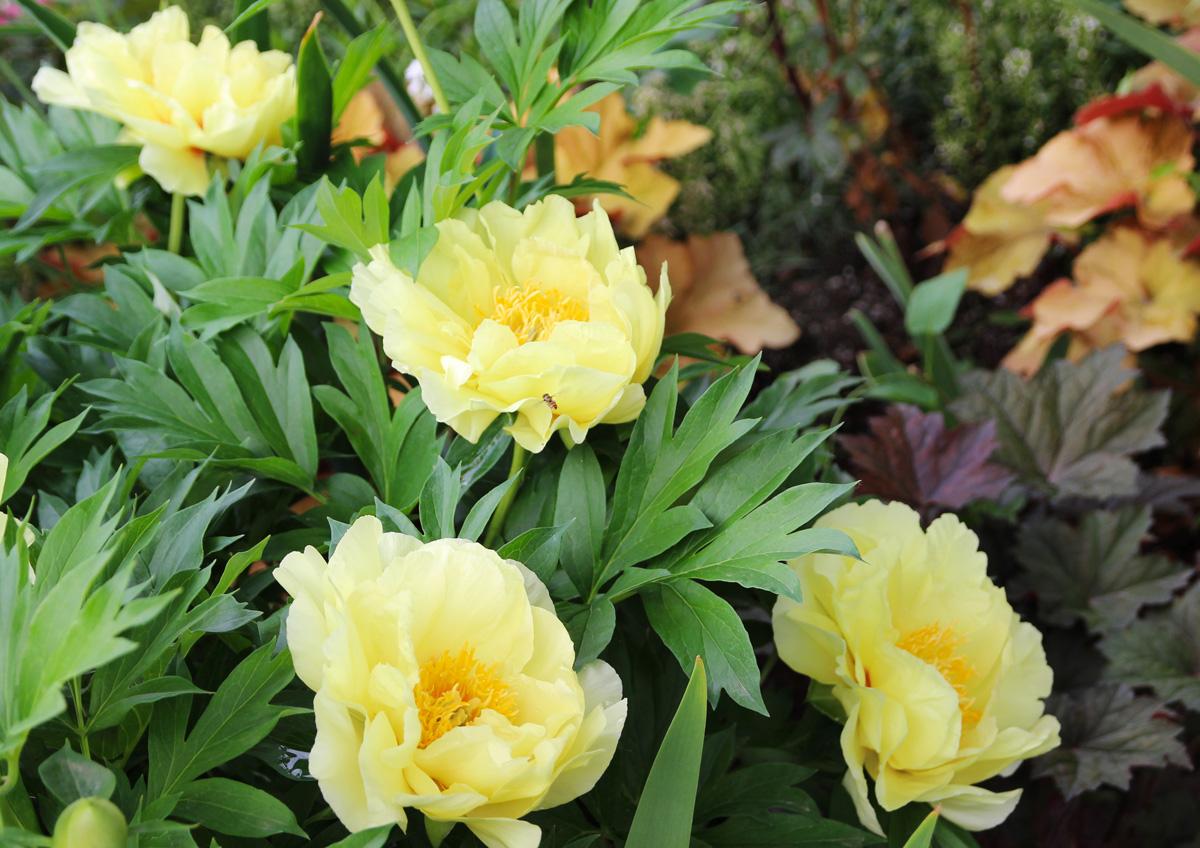Your Guide to Planning, Planting and Growing Peonies
Peonies are perennial garden classics, loved throughout the world for their extravagant, early summer blossoms. They are dependable, incredibly long-lived plants and will bloom for generations with little attention. As cut flowers, peonies have no rivals. Alone or in mixed bouquets, they have an elegant natural beauty and a delicate, unforgettable perfume.

Start with a Better Plant
When you compare two peony plants side by side, it’s easy to see differences in quality. Longfield Gardens supplies grade #1 peonies, as shown at far left. A grade #2 peony is shown at right. It takes less time for the larger root to develop into a strong plant that produces lots of flowers.
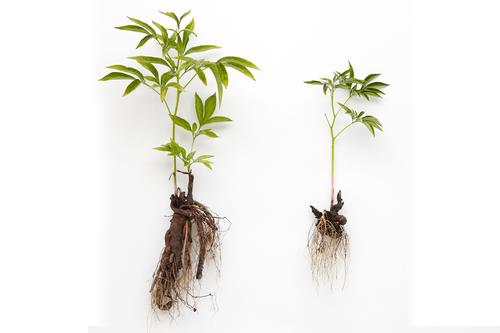
Plan for Success
Peonies are carefree plants and very easy to grow. Here are a few tips to help you get the best results.
Sun and Shade: Peonies are sun-lovers and perform best when they get at least 6 hours of sunlight per day. The more sun they get, the better they'll bloom, so plant your peonies in the sunniest location possible.
Zone: Peonies are winter hardy in zones 3-8. They grow and flower best in areas with cold winters. The plants may struggle in zone 8 and peonies are not recommended for zones 9 and warmer. Want to check your hardiness zone? You'll find the USDA Hardiness zone map here.
Soil: Most plants, including peonies, grow best in loose, fertile, well-drained soil. You can improve the quality of your soil by adding compost and all purpose fertilizer at planting time. Avoid planting in areas where the soil is soggy or compacted.
When to Plant: Bareroot peonies may be planted in spring or fall. The plants can tolerate frost, so may be put into the ground 2 to 3 weeks before your frost free date. Potted peonies may be planted at any time during the growing season.
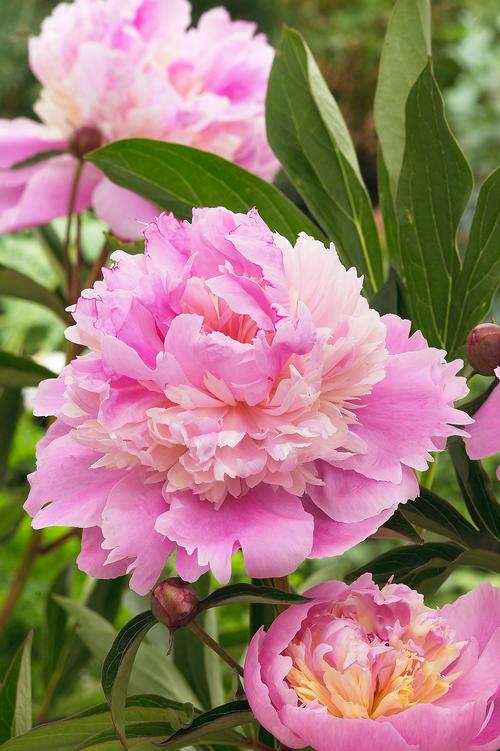
How to Plant Peonies
Dig a 12" x 12" hole. Loosen the soil at the bottom of the hole and add some compost and all-purpose granular fertilizer (follow package directions).
Replace all of the soil and then dig a new 8” deep hole in the same place.
Put the peony root in the hole so the eyes (the growing tips) are positioned no more than 1” below the soil line. When peonies are planted too deeply, the plants will grow but may refuse to bloom. Cover the root with soil and water as needed.

Planting Tips for Peonies
To ensure an abundant display of flowers, peonies should be grown in full sun. Though some varieties will tolerate partial shade, less light usually means fewer flowers.
Peonies should be planted in well-drained, fertile soil with a neutral to slight alkaline pH. Over time, they will develop a large root system and become difficult to move. Take time to site your peonies in a place where they can grow happily for many years. Once established, the plants are relatively drought resistant.
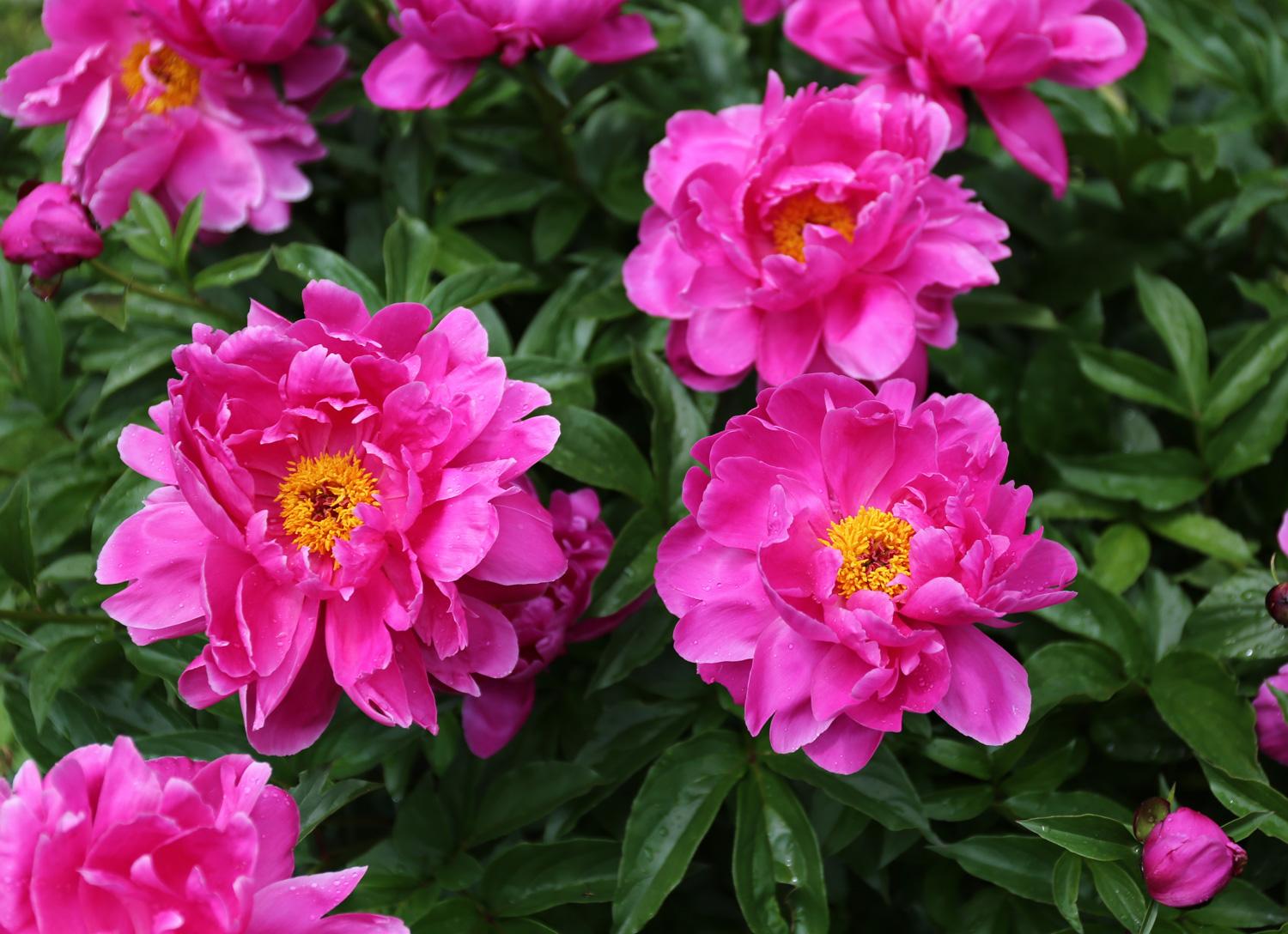
Where to Plant Peonies
Perennial Gardens Peonies are ideal for perennial gardens. Their dark green foliage stays attractive all season long. In fall, peony foliage will sometimes take on hues of red or gold.
Hedges and Fence Lines Peonies may be planted in a row to make a low hedge for enclosing a space, defining one side of a garden or bordering a walk. They also look great planted at the base of a split rail or chain link fence. Avoid planting them beside a solid fence as it will restrict airflow around the plants and make them more vulnerable to foliar diseases.
Foundation Plantings and Shrub Borders Peonies have as much presence as a small-size shrub. As long as they are planted in well-drained soil and get adequate light and good air circulation, they will thrive almost anywhere in your landscape.

What to Expect from Peonies
All peonies flower in early summer, but the exact bloom time varies by cultivar. If you plant a combination of early, mid and late season bloomers, you can extend the peony season to a month or more. Peonies are ideal companions for other early summer perennials such as iris, alliums and roses. The foliage keeps borders looking full and provides a lush backdrop for other flowers.
Depending on the variety, most peonies are at least 3-feet tall and 3-feet wide at maturity. So it’s important to allow room for them to fill out. Surrounding peonies with a support cage will help keep the flowers upright. Use a ready-made peony support or fashion your own from wood slats or remesh/steel reinforcing wire. Supports should be put in place in early spring -- before the plants are 12" tall.
Peonies are carefree plants that are rarely troubled by pests or disease. It takes at least two to three years for a young peony plant to get established, but once it has settled in, it will bloom reliably year after year.
Peonies are fantastic cut flowers. They last for days in a vase and most varieties are fragrant. If you wish, peony stems may be cut in bud and stored for later. Cut the stems when the buds are in "marshmallow" stage. Wrap stems and buds snugly in paper and store them in a refrigerator for several weeks. When ready to display, bring the stems out into room temperature, recut the bottoms, and stand them in a vase with water. The buds will open after several days.

Caring for Peonies After They Bloom
After the flowers have faded, use scissors to remove the spent flower heads and the top 6 to 8" of stem. This will keep the plants looking neat and will also prevent them from producing seed heads. Removing as little foliage as possible will help the plants produce the energy they need for next year’s flowers.
In fall, wait until the foliage is yellow, then cut back all the stems to within an inch or two of the ground.
Fertilize peonies in the spring when the stems are about 6" tall. Sprinkle about a half cup of all-purpose granular fertilizer around the base of each plant. Keep mulch and other garden debris away from the crown of the plant so the eyes don't get buried too deeply.
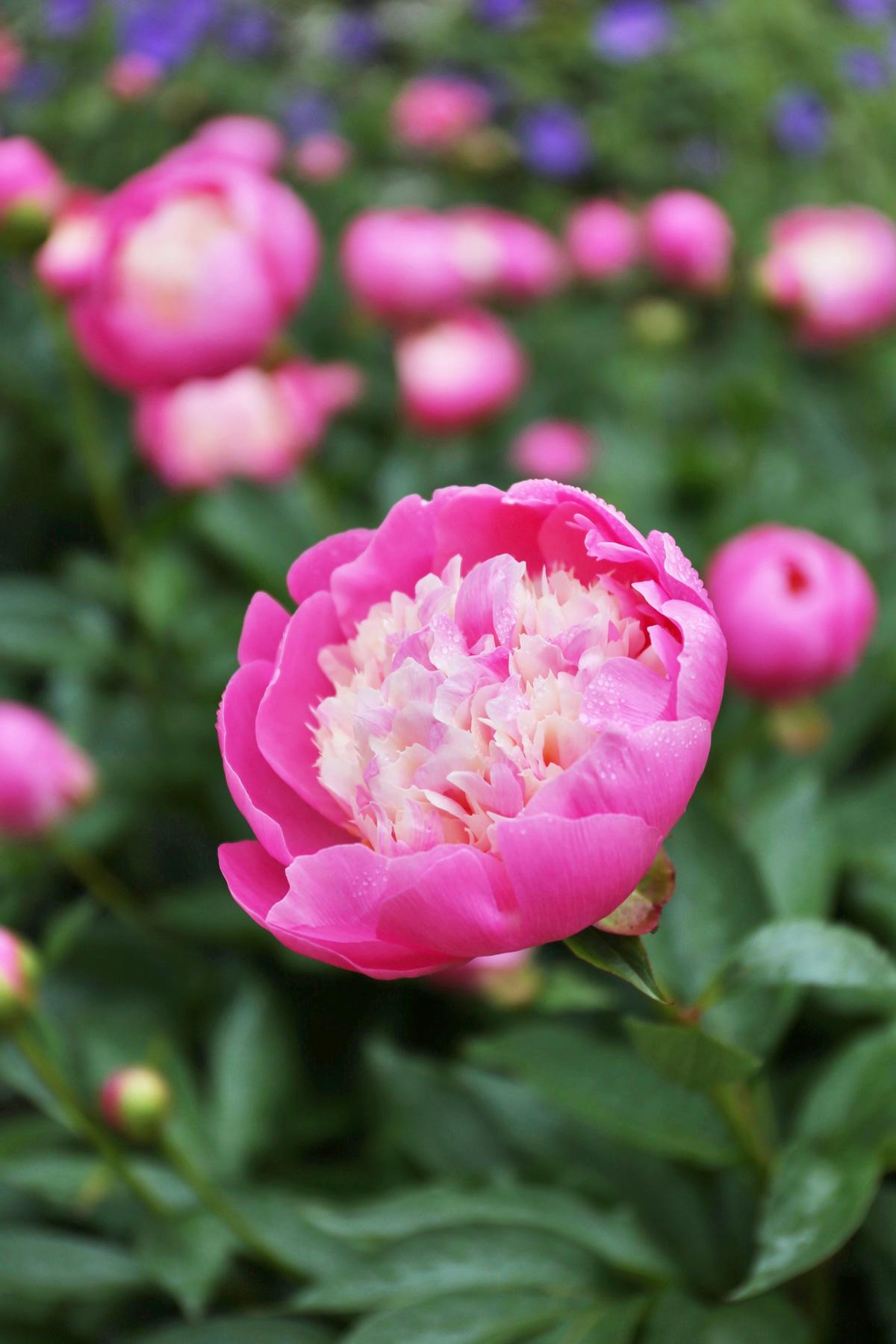
How to Divide a Peony
Peonies can bloom for decades without being divided. If you need to move a peony, do it in the fall as they are entering dormancy, rather than in the spring when they are starting to resume growth. Cut back the foliage and carefully dig up the entire root ball, which can be up to 3 feet in diameter. Dig carefully to avoid breaking off roots. Replant immediately and water deeply.
If you need to divide a peony, it can be done in fall or very early spring. One approach is to dig up the entire root ball as described above and put the clump on a tarp. Then use a sharp knife to divide the clump into sections and replant immediately. Work quickly and gently, damaging as few of the fleshy roots as possible.
Peonies may also be divided with a sharp spade. Cut one or more chunks of root away from the mother plant. Replant these divisions immediately and water as needed during the first growing season. The less the roots are disturbed, the more quickly the plants will recover. After dividing or moving a peony, you may lose a year of flowers while the plant is recovering.

Peony Pests and Diseases
Peonies are rarely troubled by pests or disease. The most common issue is a fungal disease called botrytis. It can produce dark spots on the leaves, blacken stems, and cause buds to shrivel as if they have been burned. As with all fungal diseases, warm, wet weather increases the probability of infection.
To minimize the spread of botrytis, remove and dispose of any affected tissues. The best control is preventative: remove spent flowers as soon as possible, avoid wetting the foliage with overhead irrigation, and encourage good air circulation by not crowding the plants. Fortunately, botrytis is not as serious as it looks and rarely kills the plant.
Peony buds are covered with a slightly sweet, sticky substance. This will often attract ants, who appreciate the sweet treat. Peonies don’t need the ants, but the ants do not harm the plant in any way. If you cut the flowers and want to avoid bringing ants into your home, just give the blossoms a shake or dunk them in some cool water.
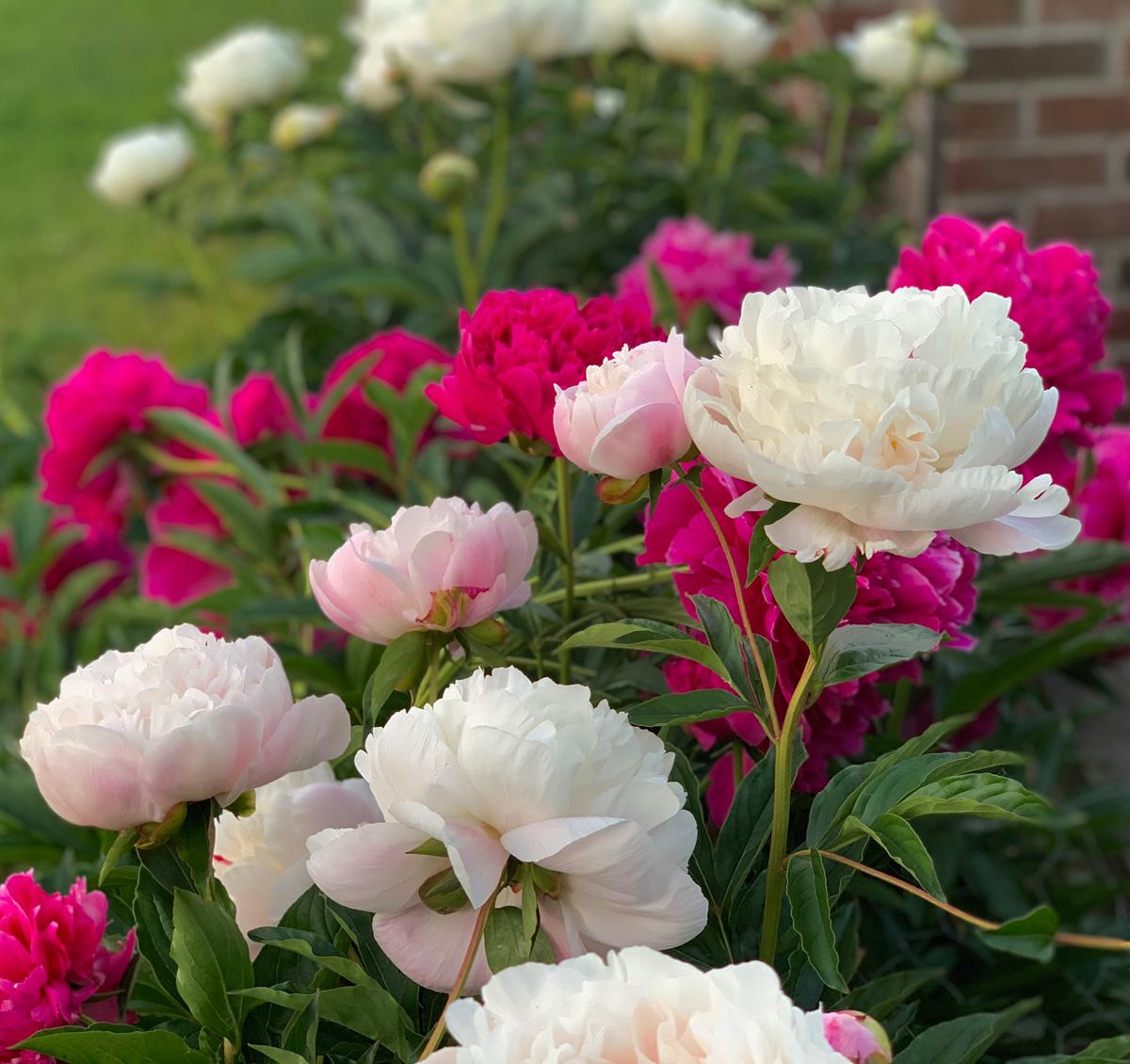
To see our selection of peonies, click HERE
To learn more about peonies, you may be interested in reading:
How to Stretch the Peony Season
How to Grow Peonies in the South
10 Easy Perennials for Sunny Gardens
